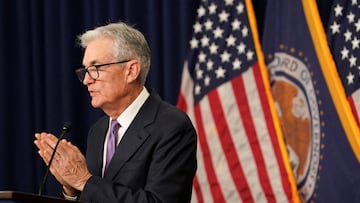FINANCE
Inflation in the US: What is ‘soft landing’ and how does it affect the economy?
The US economy is experiencing a soft landing as the Federal Reserve raises interest rates to combat inflation.

In 2022, inflation hit its highest point in forty years, leading the Federal Reserve to announce eleven interest rate hikes since March of the previous year to combat rising prices. As of November, the Consumer Price Index has tracked a 3.1 percent increase in average prices over the last year.
As the Fed continued to make these announcements, there were concerns that the United States was headed toward a recession. A recession is characterized by negative economic growth, which means that a country’s gross domestic product (GDP) contracts for two consecutive quarters or more. In the third quarter of 2023, GDP increased 5.3 percent, meaning that on this metric, the US economy has grown at least 9.5 percent this year. The fourth quarter numbers will be released on 25 January.
What is a ‘soft landing’ and how does it affect the economy?
A “soft landing” is a term used in economics to describe a situation where a country’s economy shifts from a phase of rapid growth to a more steady and sustainable growth rate without undergoing a sharp decline or recession. The goal of a soft landing is to avoid adverse consequences, such as rising unemployment, falling consumer spending, and declining business activity that often accompany a sudden economic slowdown. The concept of a soft landing highlights the challenge of maintaining balance in the economy. Policymakers like the Federal Reserve walk a fine line between stimulating economic activity and preventing overheating or recession.
If the US does achieve a soft landing, the economy would be characterized by the following:
Gradual economic slowdown
- Instead of a sudden and severe contraction, economic growth moderates to a more sustainable pace. This allows for a controlled adjustment of various economic indicators, such as GDP growth and inflation.
Stable employment
- During a soft landing, the job market remains relatively stable, with low unemployment rates. As far as the July figures from the Labor Department indicate, this is currently in place, at 3.5%. An intact job market is important to maintain consumer confidence and spending levels. Job growth should also be present, although this growth should not be too strong either.
Controlled inflation
- Inflation is kept in check or gradually reduced to prevent excessive price increases, which erode consumers’ purchasing power. The Federal Reserve is working towards a 2% rate, and this week’s Consumer Price Index report will show whether inflation has gone closer to this number.
Business confidence
- Maintaining business and investor confidence is crucial for a soft landing. If businesses feel optimistic about the future and continue to invest and expand, it can help sustain economic activity.
Federal Reserve Chair Jerome Powell said on 13 December that there is always a possibility of the economy falling into a recession and that while the news on a soft landing is positive, “it is far too early to declare victory.”
The Fed keeps interest rates at their current position
Once again, the Federal Open Market Committee (FOMC), the group that determines the federal funds rate in the United States, did not change its current position this month. When making the announcement, the FOMC stated that the decision was made because of the lagging effect of monetary policy on “economic activity and inflation, and economic and financial developments.” Not loving too fast when it comes to raising interest rates increases the chance of a soft landing, whereas additional increases at this point could push the economy into a period of negative growth and create a spiral that leads to rapid increases in unemployment as the flow of money through the economy slows.





